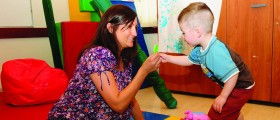
Dyslexia is a learning disability that impairs a person's ability to read. This disability is rooted in the brain’s disability to translate written text into meaningful language. This is the most common learning disability in children and it is estimated that it affects between 5 and 17 percent of the population. It typically occurs in children and it can be distinguished as difficulty in learning to read despite traditional instruction. These children are normally at least average intelligence, and with an adequate opportunity to learn.
Signs and symptoms of dyslexia
The symptoms of dyslexia differ according to the severity of the disorder as well as the age of the patient. Here are some of the most prominent symptoms.
Directional confusion makes it hard for an individual to be certain of which is left and right, to read maps accurately and write numbers and letters correctly. For example, dyslexic person may reverse letters like b and d, or even the whole words like “no” for “on” and similar.
Dyslexic persons usually have sequencing difficulties. It is hard for them to perceive something in sequence and to remember the sequence. This problem affects their reading and spelling ability.
Another strong indicator of dyslexia are difficulties with the little words. Children are often making mistakes not on the complicated words but on the small words like “if”, “to”, “and”… The child may misread these words, omit them or add them even if they don’t appear in the text.
Late speaking or immature talk of a child when he or she is five years old is another strong indicator of dyslexia. Parents should pay special attention to the language development of their child and consult a doctor if they notice unexpected grammatical errors at this age.
People with dyslexia normally have problems with handwriting that manifests as irregular letter sizes and shapes, unfinished text, letter inconsistencies and generally illegible writing. They may also have problems with mathematics and bizarre reading and spelling. The former is a severe form of dyslexia in which individuals guess wildly at words, regardless of whether they make sense or not.
Diagnosis
It is quite difficult to determine if a child has problems with dyslexia before it begins school. However, many patients with dyslexia have a long history of learning difficulties that originate long before the school days.
Treatment
Children with dyslexia need individualized tutoring, and a lot of emotional support from their family and peers. The sooner the treatment begins, the better the results will be. Sometimes, teachers will use a multisensory approach and different techniques that involve hearing, vision, and touch to improve the reading and writing skills.

















Your thoughts on this
Loading...